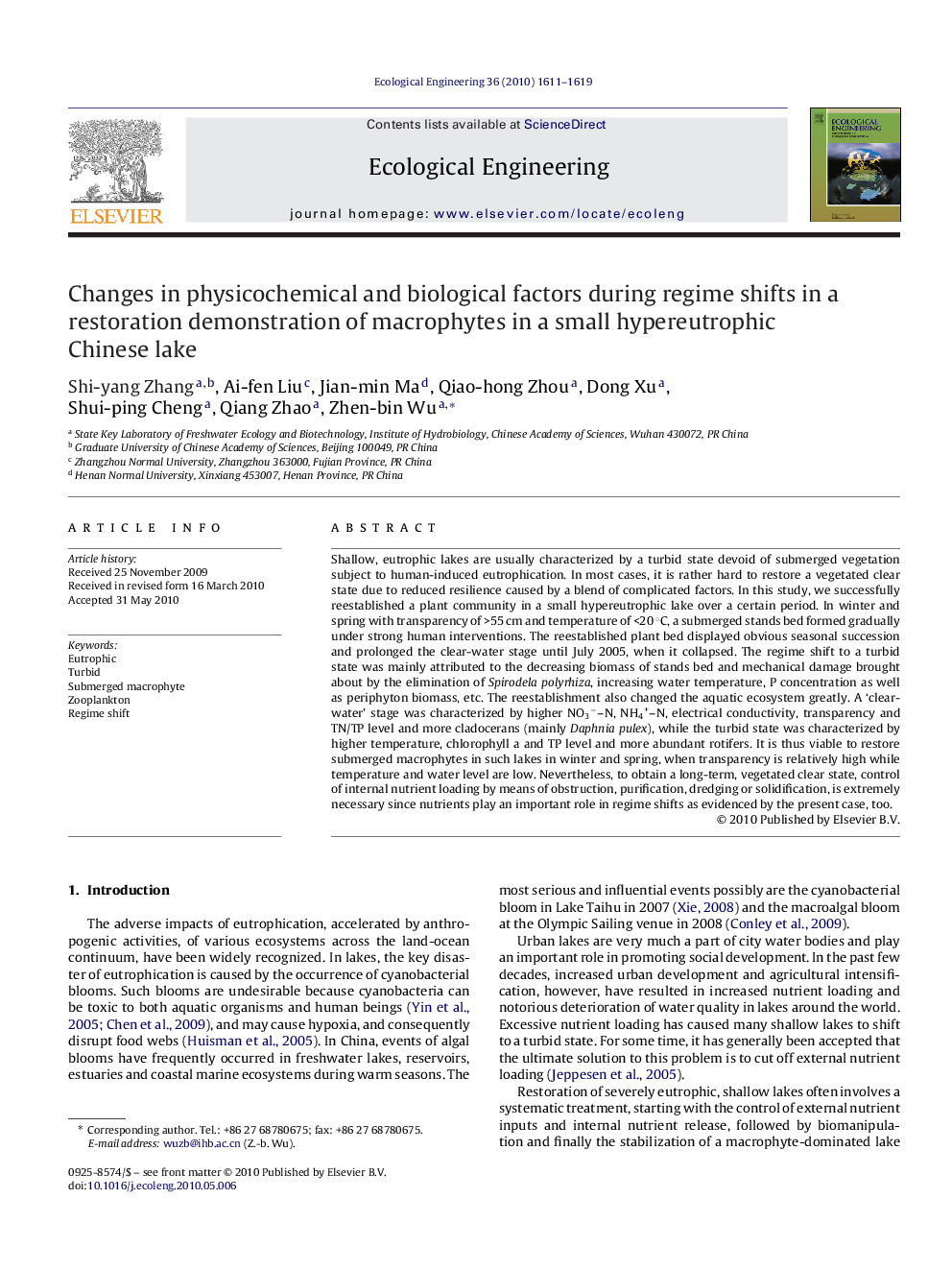| Article ID | Journal | Published Year | Pages | File Type |
|---|---|---|---|---|
| 4390471 | Ecological Engineering | 2010 | 9 Pages |
Abstract
Shallow, eutrophic lakes are usually characterized by a turbid state devoid of submerged vegetation subject to human-induced eutrophication. In most cases, it is rather hard to restore a vegetated clear state due to reduced resilience caused by a blend of complicated factors. In this study, we successfully reestablished a plant community in a small hypereutrophic lake over a certain period. In winter and spring with transparency of >55 cm and temperature of <20 °C, a submerged stands bed formed gradually under strong human interventions. The reestablished plant bed displayed obvious seasonal succession and prolonged the clear-water stage until July 2005, when it collapsed. The regime shift to a turbid state was mainly attributed to the decreasing biomass of stands bed and mechanical damage brought about by the elimination of Spirodela polyrhiza, increasing water temperature, P concentration as well as periphyton biomass, etc. The reestablishment also changed the aquatic ecosystem greatly. A 'clear-water' stage was characterized by higher NO3â-N, NH4+-N, electrical conductivity, transparency and TN/TP level and more cladocerans (mainly Daphnia pulex), while the turbid state was characterized by higher temperature, chlorophyll a and TP level and more abundant rotifers. It is thus viable to restore submerged macrophytes in such lakes in winter and spring, when transparency is relatively high while temperature and water level are low. Nevertheless, to obtain a long-term, vegetated clear state, control of internal nutrient loading by means of obstruction, purification, dredging or solidification, is extremely necessary since nutrients play an important role in regime shifts as evidenced by the present case, too.
Related Topics
Life Sciences
Agricultural and Biological Sciences
Ecology, Evolution, Behavior and Systematics
Authors
Shi-yang Zhang, Ai-fen Liu, Jian-min Ma, Qiao-hong Zhou, Dong Xu, Shui-ping Cheng, Qiang Zhao, Zhen-bin Wu,
